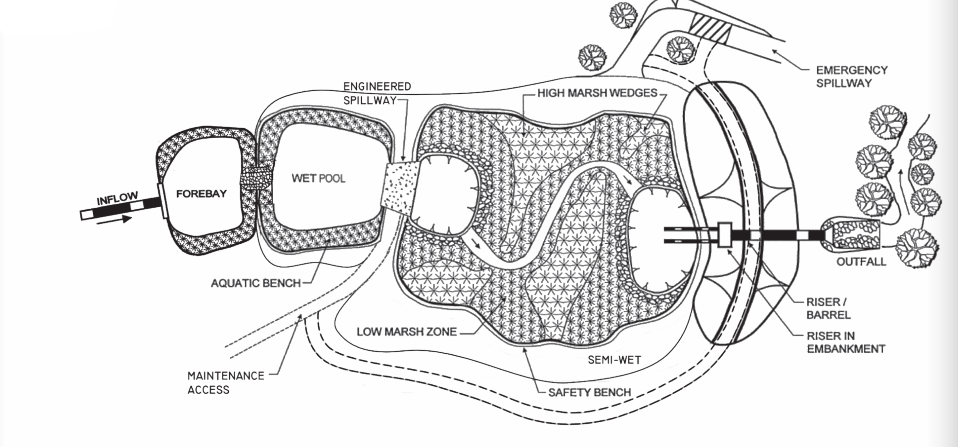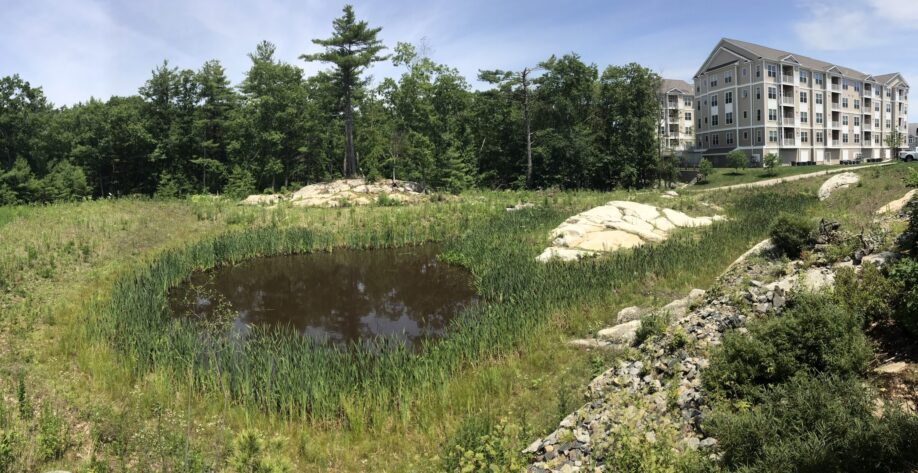Most land development and site improvement projects require stormwater management systems. When an impervious area is added (parking lots, buildings, etc.), it alters the site’s natural drainage by increasing surface runoff and adding pollutants to the drainage system. Constructed stormwater wetlands can be useful for project sites that require enhanced treatment, wetland mitigation, habitat breeding, and/or a more natural aesthetic for the site’s stormwater management practices. Smaller versions of constructed stormwater wetlands are typically referred to as “pocket wetlands.” These are appropriate for drainage areas up to 10 acres. Pocket wetlands are beneficial in replicating isolated wetlands that may be filled or otherwise impacted during construction, and for treating stormwater pollutants through vegetated filtering and settling particulates in strategically located marshes and micro-pools.
Pocket wetlands can efficiently remove soluble pollutants, as well as nitrogen, phosphorous, oil and grease. With the inclusion of a sediment forebay, a pocket wetland provides 80% total suspended solid (TSS) removal. Pocket wetlands also don’t require extensive maintenance. During the first three years following construction, pocket wetlands should be inspected twice during the growing and non-growing seasons to document the dominant plant species, among other aspects. After three years, the only required maintenance is annual cleaning of the sediment forebay.
Pocket wetlands need to have a base water elevation to maintain minimum water levels throughout the year, especially during dry seasons. Therefore, it is important to perform a soil evaluation prior to choosing the pocket wetland’s location. The soil evaluation should reveal the groundwater elevation and whether the soils are conducive to creating a wetland environment. Typically, silty soils are preferred because they retain water, whereas sandy soils may require an impermeable liner since water infiltrates too quickly to maintain wetland conditions.
There are some challenges with pocket wetlands. Proper location is important. For example, since they do not provide groundwater recharge, they can create a breeding habitat for mosquitoes so placing them near popular gathering areas should be avoided. In order to meet groundwater recharge standards, pocket wetlands can be proposed in conjunction with bioretention areas or infiltration chambers elsewhere on site.

Tagged In:
Civil Engineering
